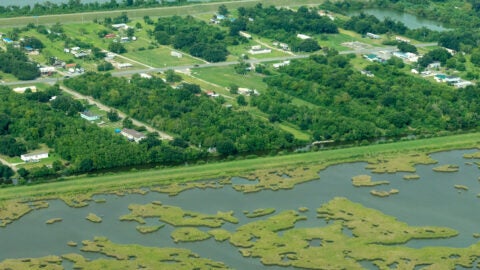Day Two of Landmark Clean Air Cases: Courtroom Arguments Wrap Up
The U.S. Court of Appeals in Washington D.C. heard its second and final day of oral arguments, today, in a landmark group of cases about EPA’s critical climate protections.
Today’s arguments focused on EPA’s actions to require cost-effective greenhouse gas emission reductions from the largest sources, like power plants — while shielding smaller sources.
I was at the courthouse again today. Here’s a look at some of the highlights:
The judges began by examining EPA’s decision to initially focus climate protections on the largest sources of pollution. The judges closely questioned the Solicitor General of the State of Texas about how this focus on large sources harmed the state.
In a pointed exchange, Chief Judge Sentelle noted that the remedy Texas seeks — invalidation of the large-source thresholds — would seem to cause Texas injury where, under EPA’s current program, none exists.
The Chief Judge underscored the seeming irrationality of this position, noting that Texas’s argument:
[D]oesn’t even make good non-sense.
The questioning then turned to EPA’s long-standing rules describing the workings of the permitting system for the largest sources of pollution. Those rules are more than 30 years old.
In this series of exchanges, Judge Tatel focused on provisions of the Clean Air Act that capture “any air pollutant” within this program. He questioned the Petitioners about how this language, and the Supreme Court’s decision in Massachusetts v. EPA, could possibly allow the agency to exclude greenhouse gas pollutants.
Like yesterday, the judges closely examined EPA’s legal authority. Today, they pointedly questioned both Petitioners and EPA.
It was another fascinating day in the courtroom with important implications for protecting human health and the environment from the clear and present danger climate pollution poses.
Now, we’ll all have to wait for the court’s decisions –probably sometime in the summer. We’ll bring you updates as soon as anything happens.
In the meantime, you can read more about the EPA’s endangerment findings and the attacks on EPA’s climate change protections on our website, or from my earlier blogs posts – a preview of the case, or a look at yesterday’s proceedings.












